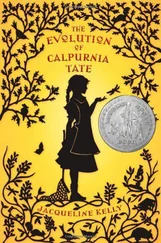This narrow basis for military activity in the sixteenth, seventeenth, and eighteenth centuries fully sustains the narrow distribution of political power in the same period. Accordingly, it became relatively easy for the vested interest groups to defend the status quo and to prevent structural changes when the new period of crisis began at the end of the seventeenth century.
6. Second Age of Conflict
The second period of expansion in Western civilization was transformed into a second Age of Conflict when the instrument of expansion became an institution. The two phases of this organization are generally called commercial capitalism and state mercantilism. The preceding period of mercantilism, which we called municipal mercantilism, generally had been regulated by municipal political units rather than by the wider monarchical political units of the eighteenth century; it had been dominated by the interests of the consumer and had reflected this concern in a "policy of provision" that put restrictions on exports but not on imports, and tried to regulate craft activities to protect quality. By 1400 this policy had become very restrictive. The second phase of mercantilism was organized on a different basis with different aims, since it was generally regulated by dynastic monarchies and generally sought to protect the interests of commercial groups. As such, it had no interest in restricting either imports or exports, but rather sought to make goods go through the territory so that fees of handling and the profits of exchange could be ensured to the citizens. This is frequently called "the policy of the staple," and contrasts both with the "policy of provision" of the first Age of Conflict and with the "policy of protection" of the third Age of Conflict (that associated with monopoly capitalism after 1900). These three policies represent the interests of three different aspects of the economic system. Any economic system must provide production, distribution, and consumption. Each of the three Ages of Conflict of Western civilization sought to protect the vested interests of one of these aspects, but in the reverse order so that the consumer was dominant in the first period (about 1400), the trader was dominant in the second (about 1750), and the producer was dominant in the third (about 1930). Any effort to make means into ends or to make one section or aspect of a process the dominant interest of the whole process is a clear indication of institutionalization.
This process of institutionalization can be seen as a kind of general stagnation of Western civilization during most of the century from 1650 to 1750. The geographic expansion that had spread in such a phenomenal way in the period 1450 to 1650 began to hesitate. In North America the colonies remained east of the Appalachians or, in some areas, below the fall line; in South America the incredible explorations of the earlier period, which, for example, had seen the continent crossed from west to east by way of the Amazon, were not repeated until the nineteenth century. In the history of Africa, we find a similar situation. In most areas of the Dark Continent there were widespread explorations and missionary activities, even a transcontinental journey, in the sixteenth century, but then nothing similar occurred again until the nineteenth century. Expansion into India and the Far East shows a similar, but less drastic, hesitancy.
The same cycle can be seen in legislation, which devoted itself, after about 1650, to the defense of the status quo or to the effort, by political action, to obtain a larger share for oneself of what was regarded as a static and unexpandable body of the world's wealth. This can be seen in the navigation acts that the English colonies in America so resented in the period after 1765 but that were first enacted after 1649. These acts sought to prevent economic innovations in the colonies and to force their trade and commodities to go through England and English hands whatever their ultimate destination. At the same time, within England, technical innovation was discouraged, work became an end in itself, and laws were made to preserve existing markets as they stood. In a semistatistical study, Change and History, published in 1952, Margaret T. Hodgen found three periods of technical innovation in Western history. These were the eleventh century to the fourteenth century, the sixteenth century, and the nineteenth century. Governments did all they could to discourage such innovation in the late seventeenth century in contrast to the late sixteenth when they still sought to reward it. In England the patent power was used to prevent new techniques rather than to encourage them. As early as 1623 the Privy Council ordered destruction of a machine for making needles; cloth buttons (rather than bone) were forbidden in 1698, while Indian calico was forbidden in 1686. A law of 1666 ordered all persons to be buried in wool rather than in the traditional linen. Every effort was made to prevent new techniques in the textile industry and thus, in effect, to hamper the growth of cotton textiles. In France these efforts culminated in the crafts codes of Jean-Baptiste Colbert. Issued in seven volumes of 2,200 pages over the period 1666-1730, these sought to prescribe every detail of the established craft techniques and to proscribe innovations in these. Economic aims and economic values were distorted and frequently reversed so that consumption was condemned as an evil, abundance abhorred, work praised as an end in itself, exporting encouraged, and poverty regarded as a good because it was the only way to keep people working. The esteemed Sir William Petty (1662) believed that a country could get richer and richer by exporting more and more and that it would be a good thing "if the products of the labor of a thousand men could be burned" since these men could then keep their skills by having to make the goods over again. Charles Davenant in 1698 wrote. "By what is consumed at home one loseth only what another gets and the nation in general is not all the richer, but all foreign consumption is a clear and certain profit." More briefly in 1673 Becker wrote, "All selling is good, all buying bad," while in 1677 John Houghton drew a logical conclusion from these ideas by suggesting that England could get richer by inviting foreigners to come in to "consume our corn, cattle, cloths, coals, and other things." It was suggested that an enemy in wartime could be greatly weakened if he could be flooded with goods and, as late as 1810, that last great mercantilist, Napoleon, issued licenses to smugglers to carry goods into England secretly. De Mandeville praised vice because it was unproductive, while Defoe praised a law forbidding a more efficient canalboat able to do the same work with fewer men.
It can hardly be expected that ideas and statements such as these could be fitted together to provide any self-consistent and convincing economic theory, but even as they stand they reveal a determination to defend isolated vested interests such as prevail in a period of institutionalized organizations.
As might be expected in such a period, the century 16501750 was one of imperialist wars, of class conflicts, of flattening population expansion, of softening prices, and of irrational confusions. Of these the class conflicts and imperialist wars continued until 1815, although a new Age of Expansion had begun as early as 1730. Napoleon was the culmination of this Age of Conflict, seeking to establish a universal empire (and almost succeeding in the core area by 1811), seeking to enforce his mercantilist conceptions with the full authority of his imperial system, and quite convinced that he was living in a limited world in which one share could be increased only if another were curtailed.
In these wars Napoleon was fighting "the wave of the future" with the methods of the past. This can be seen quite clearly if we merely look at four or five aspects of the new nineteenth century of expansion.
Читать дальше










